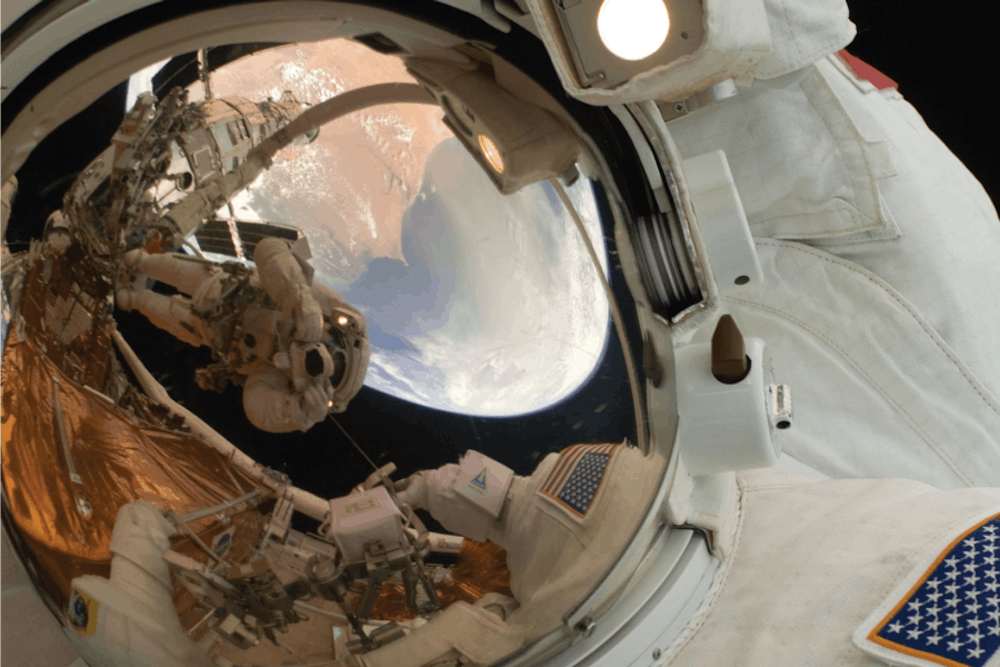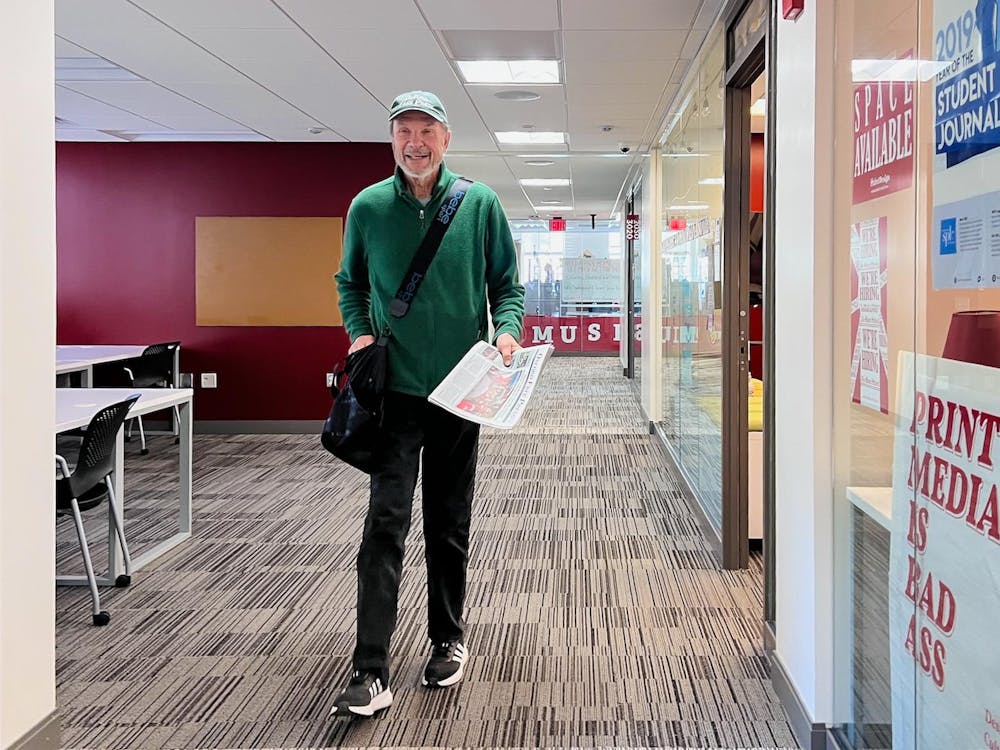By Jeffrey Sadownick, For The Miami Student
Miami students gathered on Tuesday night for a journey to space - through the stories and photographs of retired astronaut Robert "Hoot" Gibson.
Gibson stressed the importance of science education and captured students' sense of wonder during his lecture.
Gibson was a pilot on five space shuttle missions between 1984 and 1995 and also helped redesign NASA's solid rocket boosters after the Challenger disaster. On behalf of the Astronaut Scholarship Foundation, he awarded Miami senior Michael Markesbery with a $10,000 scholarship. Markesbery, a zoology major with minors in neuroscience and entrepreneurship, was one of only 28 students nationwide to be selected for the scholarship.
Markesbery inspired the large audience in the Armstrong Pavilion room to persevere and not to fear failure, but rather embrace it. Markesbery related the idea of perseverance to the Indian rain dance - rain dancers would not stop dancing until the rain came. In the same way, one should not stop pursuing his or her dreams until they are accomplished.
Markesbery has conducted research in several fields including research on aerogels, which are extremely low-density materials that have important applications in science including trapping space dust for analysis.
Gibson emphasized the need to strengthen America's science, technology, engineering and math (STEM) education and pointed out the fact that America is now ranked fifth in the world for science education behind countries such as Japan and South Korea and is falling further behind. He related the advancement of the space shuttle to the need for science careers.
"I think it will go down in history as one of the most remarkable advances ever," Gibson said of the space shuttle program.
Gibson had decorated piloting careers in the Navy and in NASA. He started his career as a jet fighter pilot on aircraft carriers, flying jets such as the F-14 Tomcat. When Gibson applied to be an astronaut in 1978, he said he knew there were hundreds of other qualified applicants, and with that he again reminded the audience not to give up on dreams in the face of adversity.
"They're going to pick somebody - it might as well be you," Gibson said.
Gibson's message resonated with students.
"I think the message that he sent was that you should follow your dreams no matter how small of a chance you think you have," first-year Evan Forst said.
Enjoy what you're reading?
Signup for our newsletter
On his final shuttle mission Gibson docked the shuttle Atlantis with the Russian space station Mir, the first time an American shuttle did so. Gibson shook hands with the Russian space station commander, a significant display of friendship between the United States and Russia after the decline of the Cold War.
"I'm the one who ended the Cold War," Gibson joked.
Gibson showcased a number of fascinating photos taken during his shuttle missions, including views of a hurricane, an erupting volcano and the Nile River from space. Gibson also showed the famous photo of the first untethered spacewalk, which he took from inside the shuttle. (Gibson joked that he personally did not go on spacewalks because he was "too important" to get lost in space).
The photo of the untethered spacewalk astounded the audience.
"That's the scariest thing I've seen somebody do," first-year Jack Fetick said.
Gibson encouraged students to take an interest in science and above all to follow their passions.




